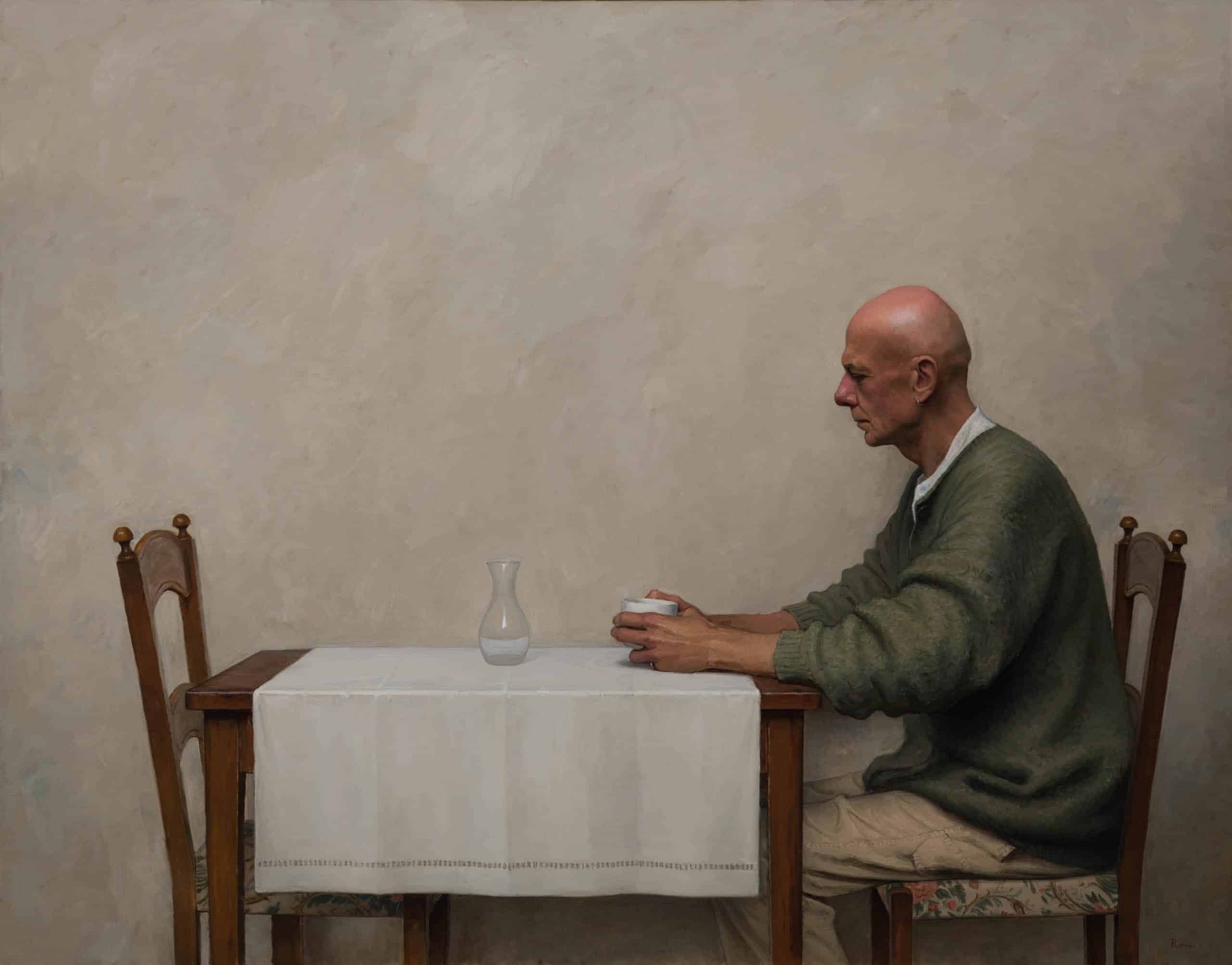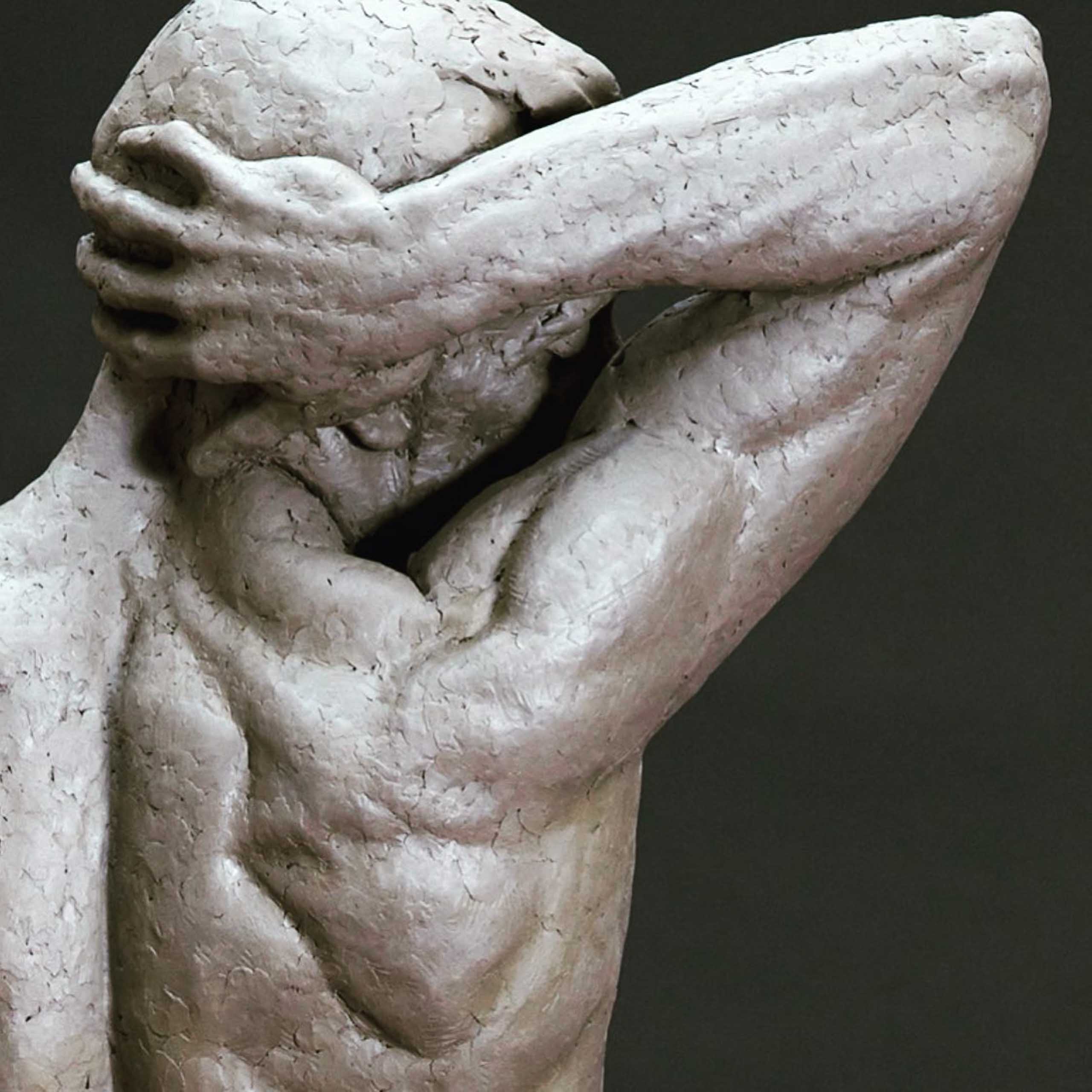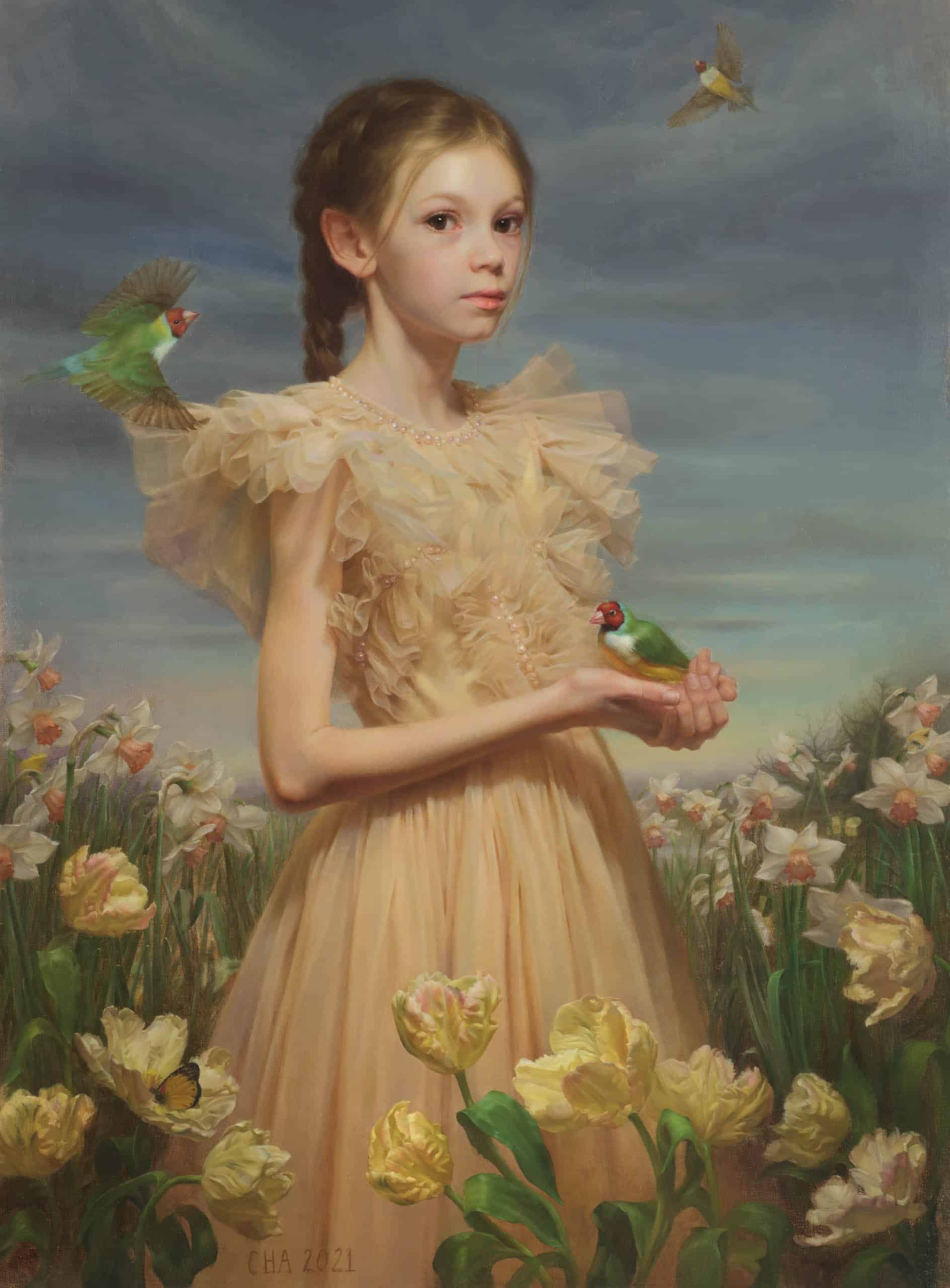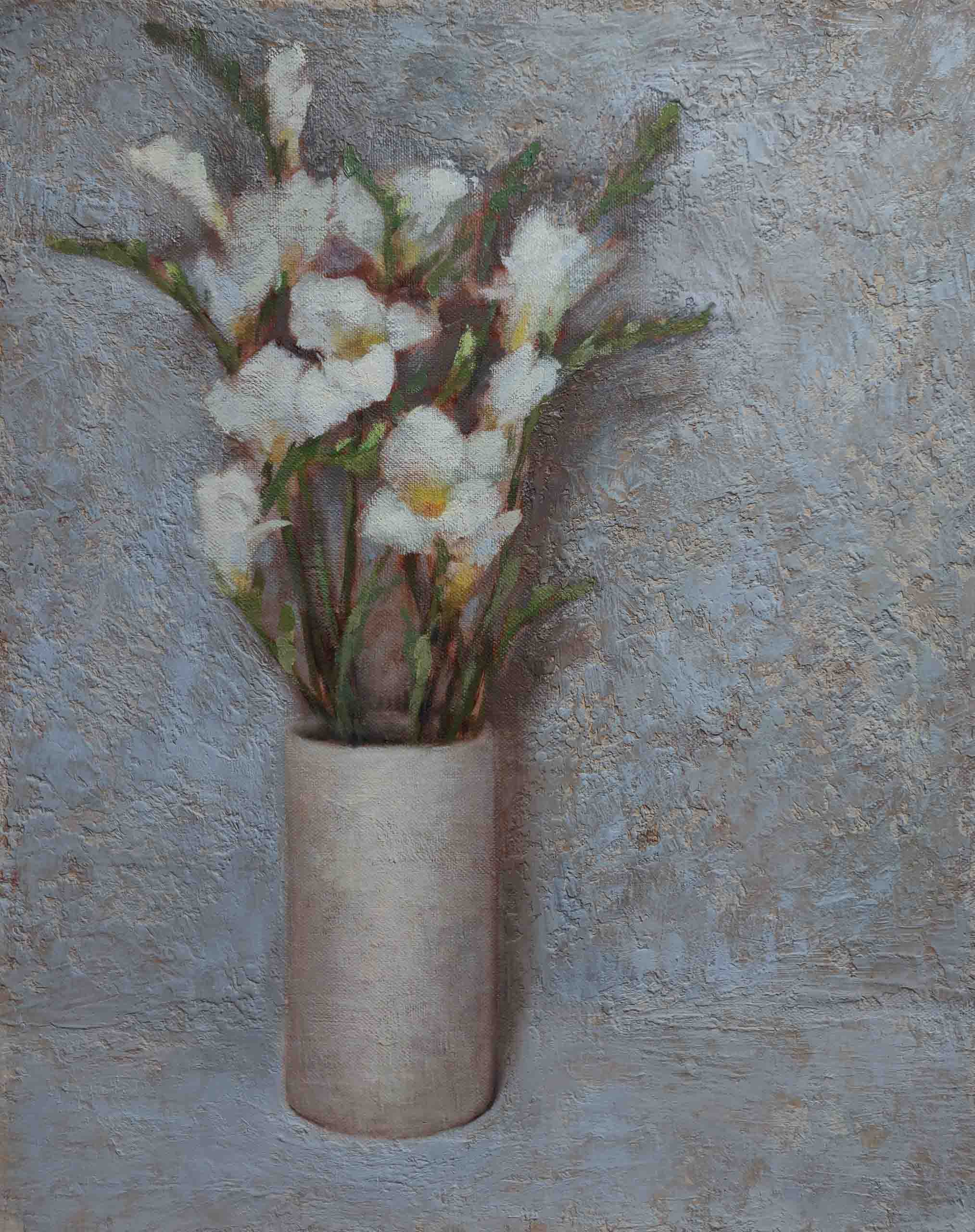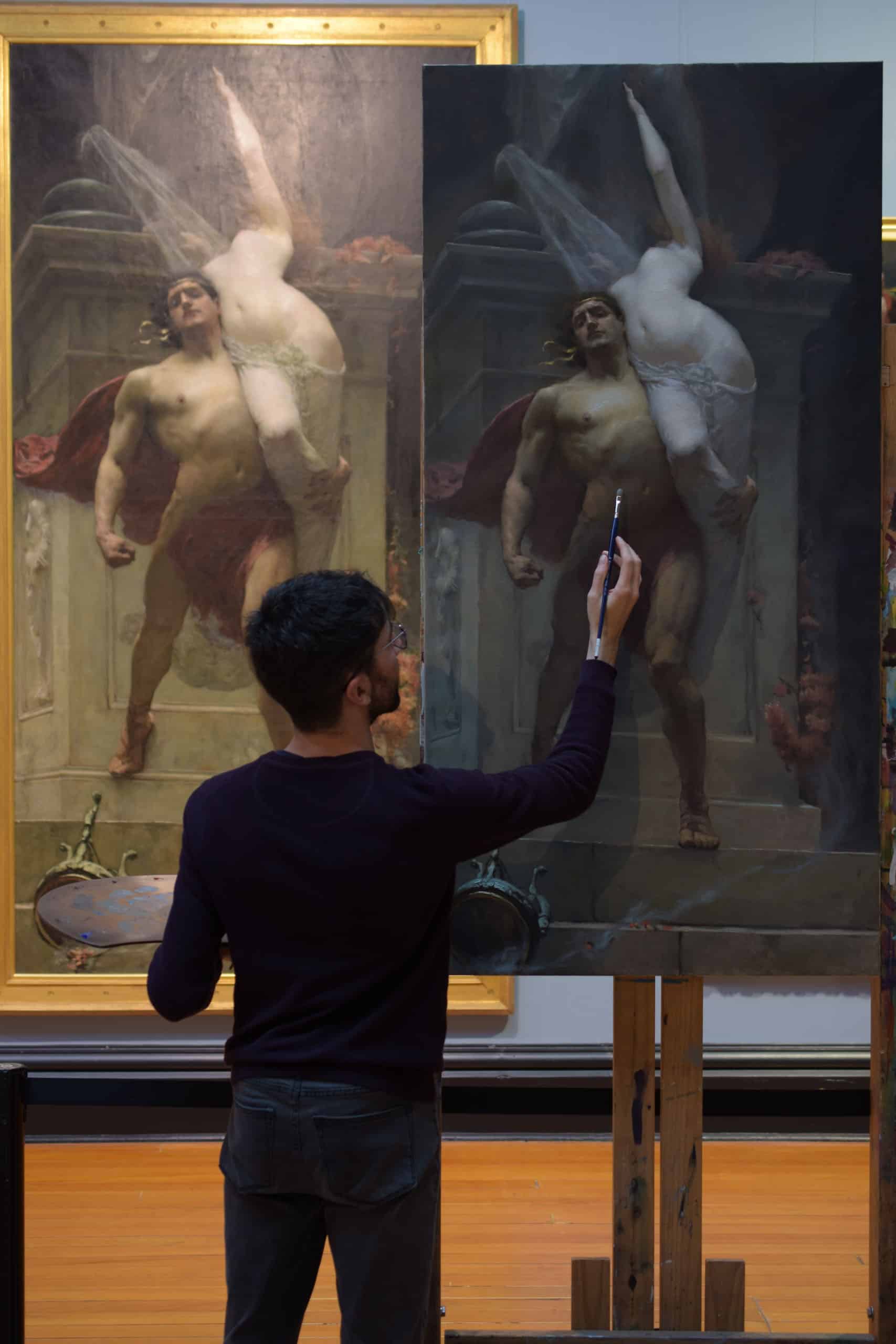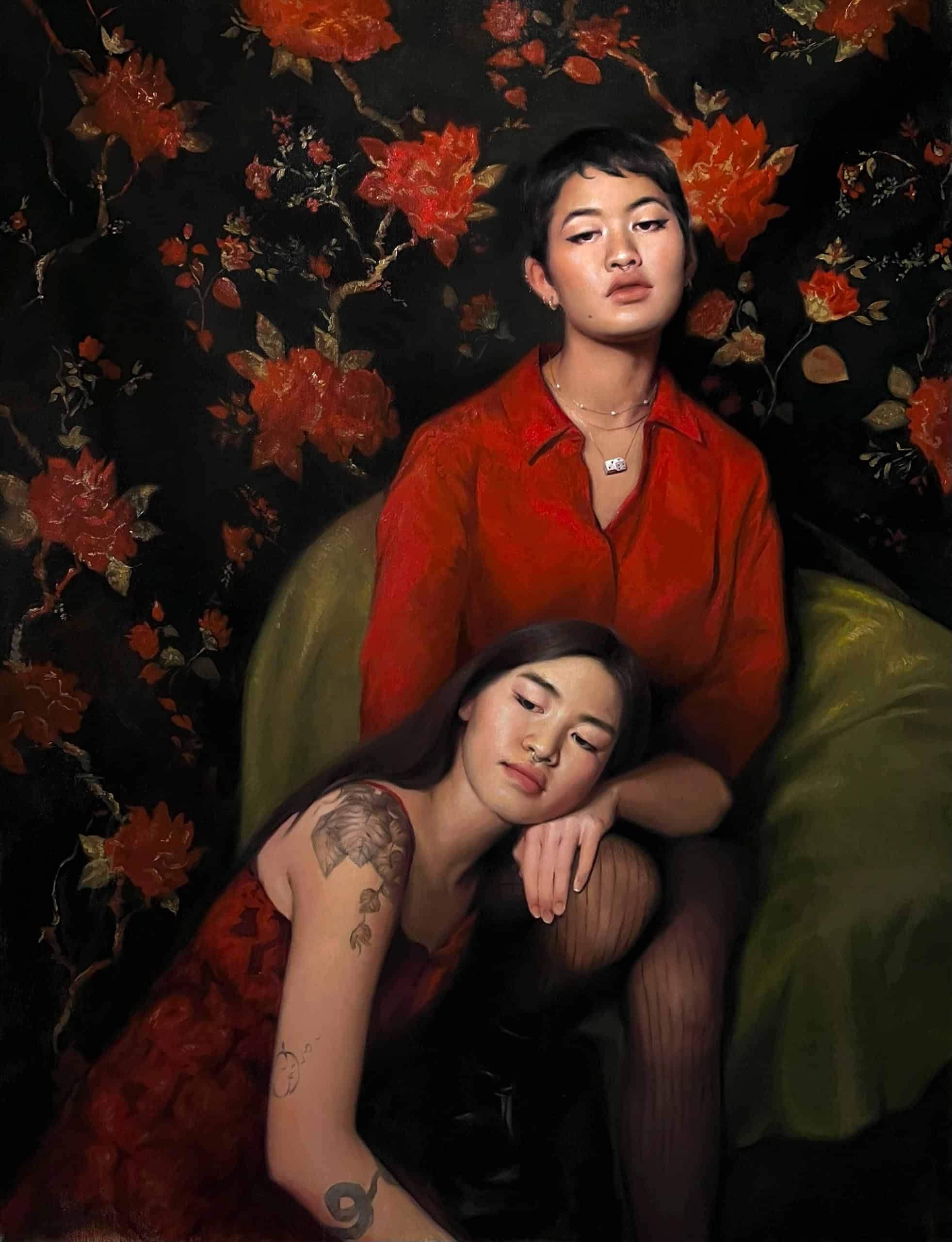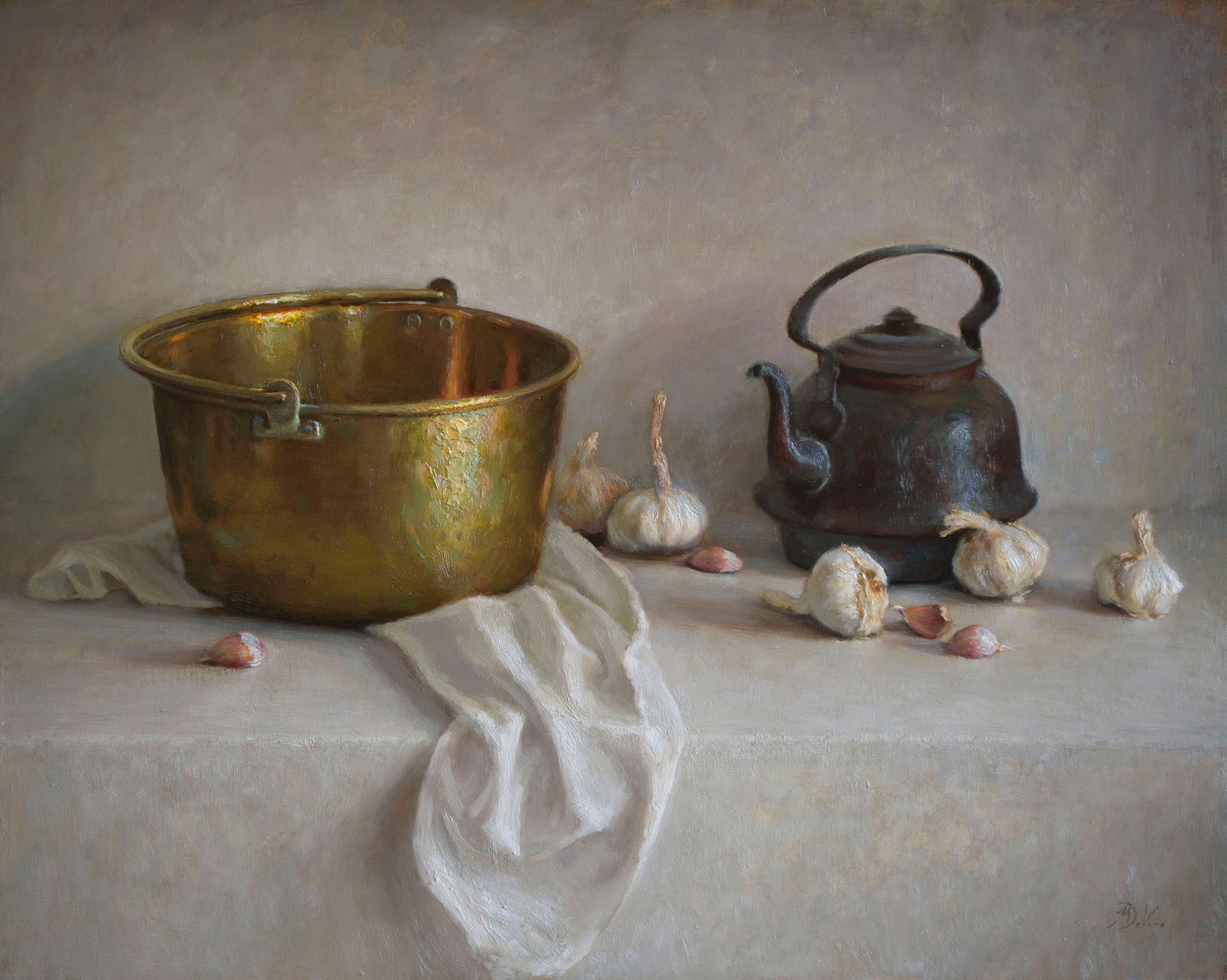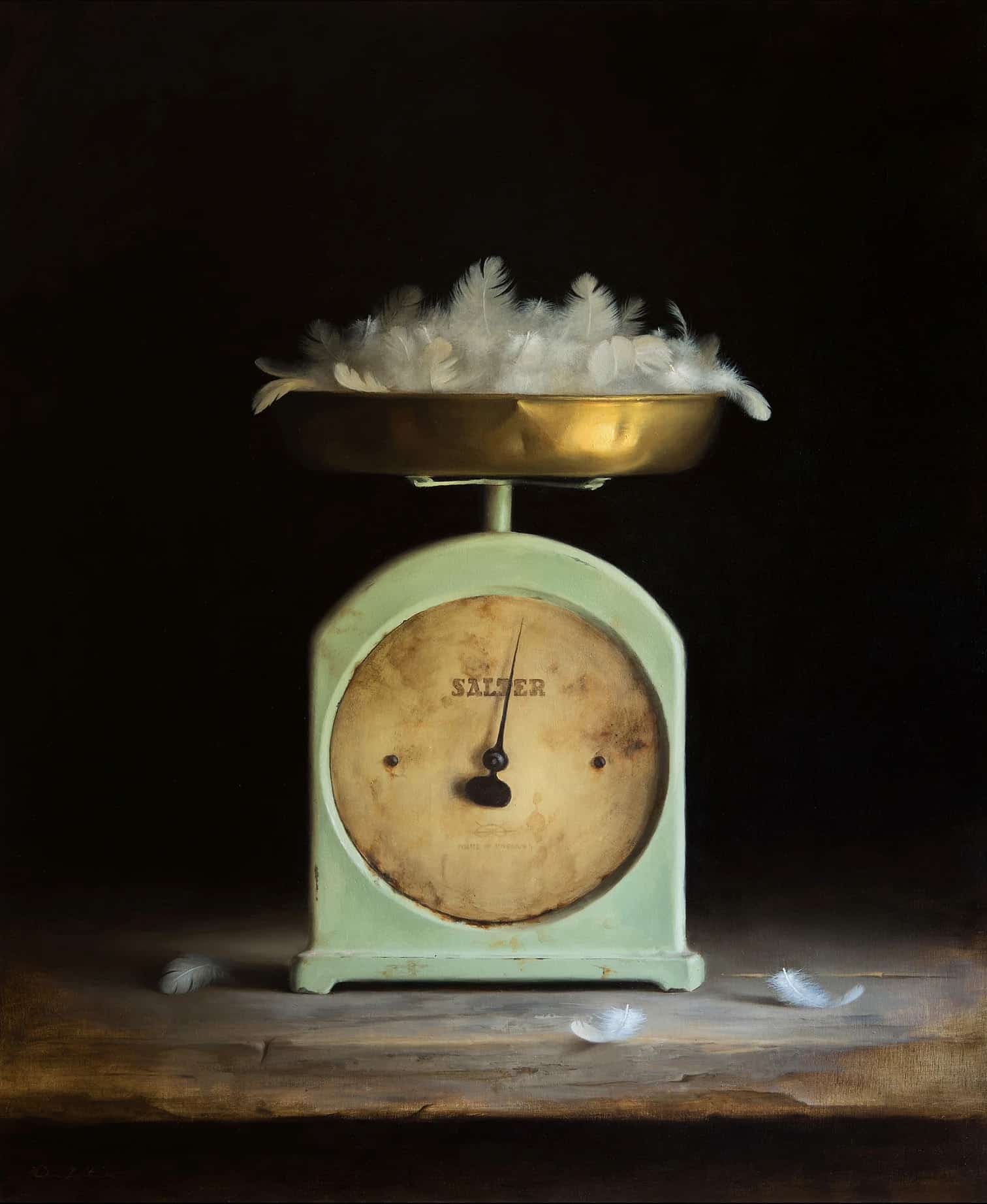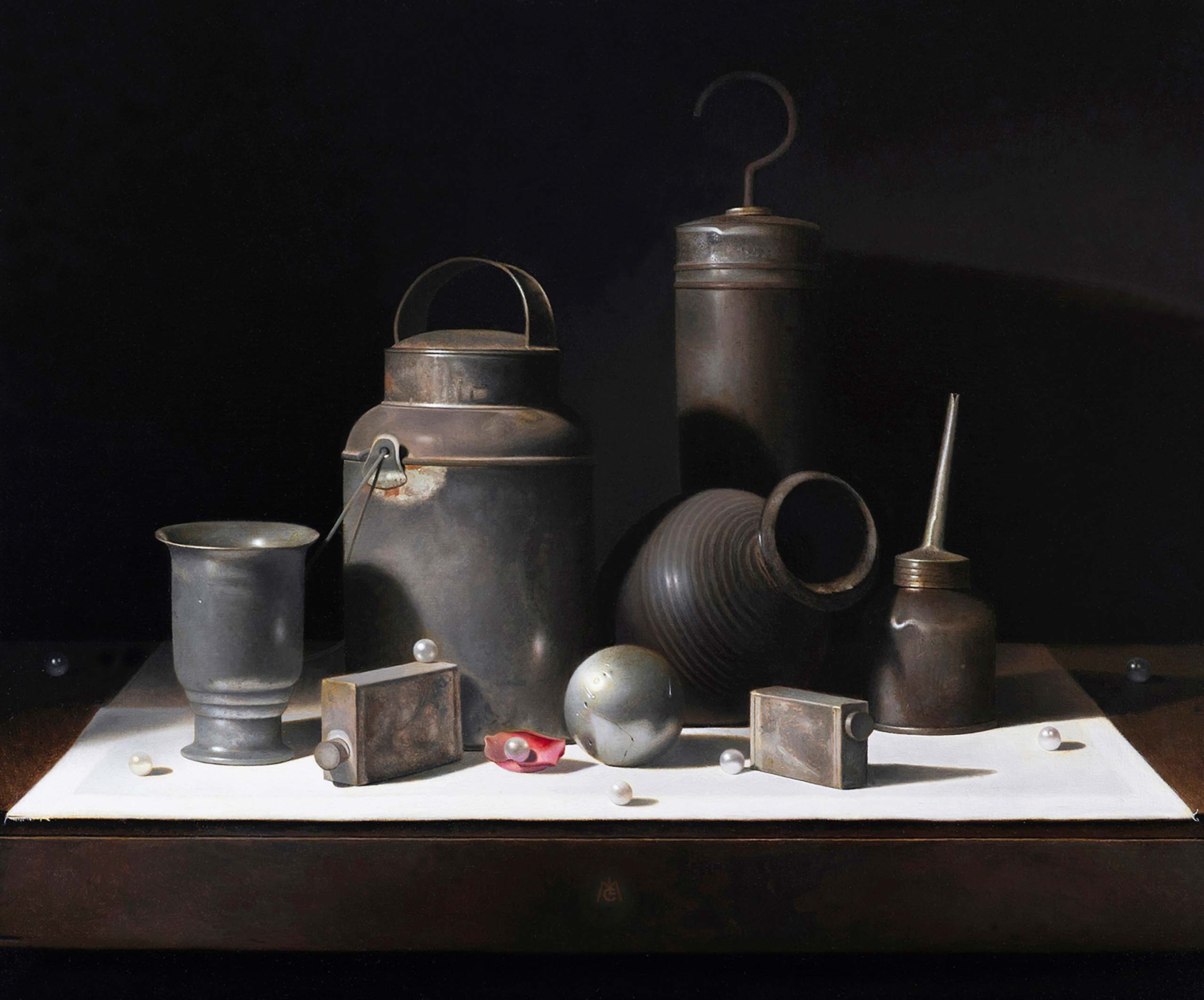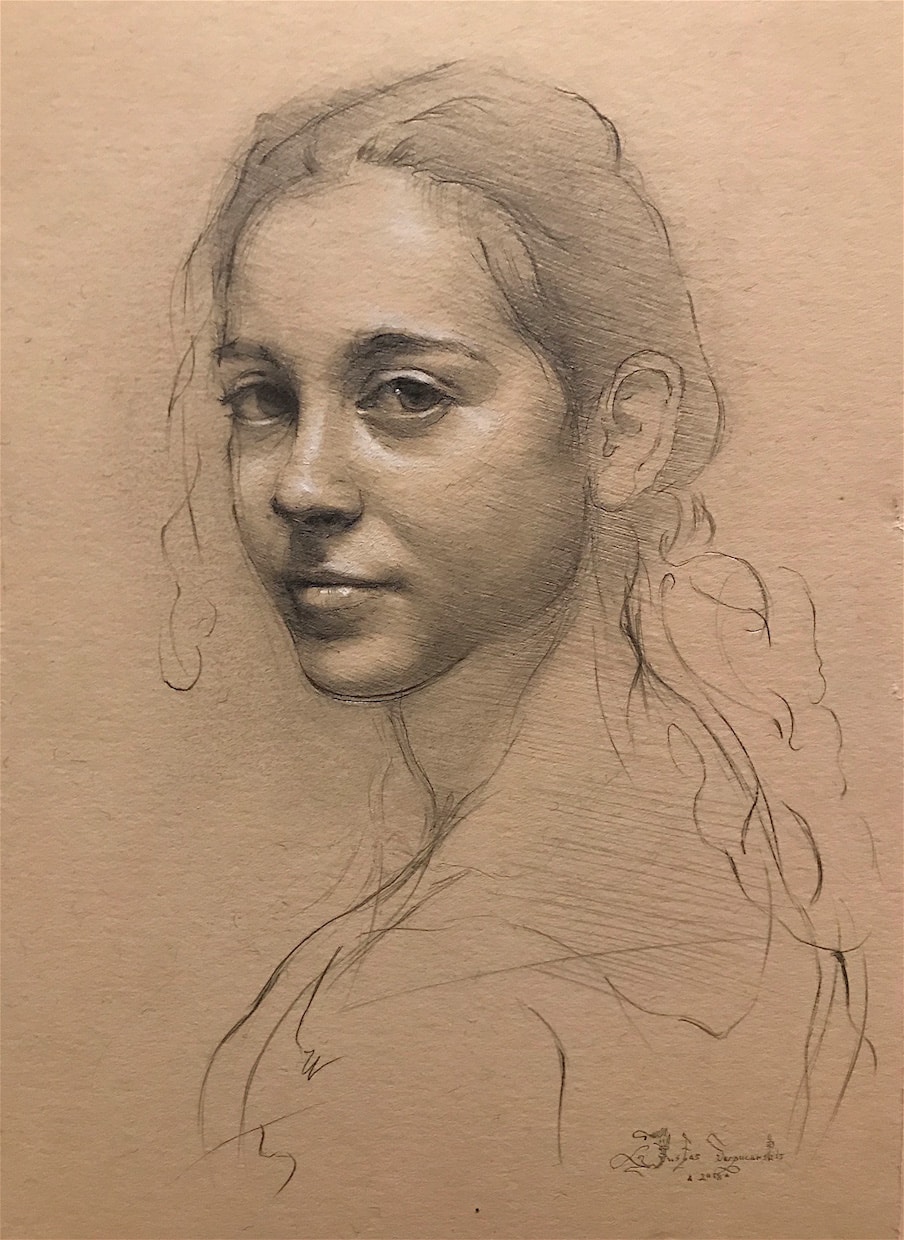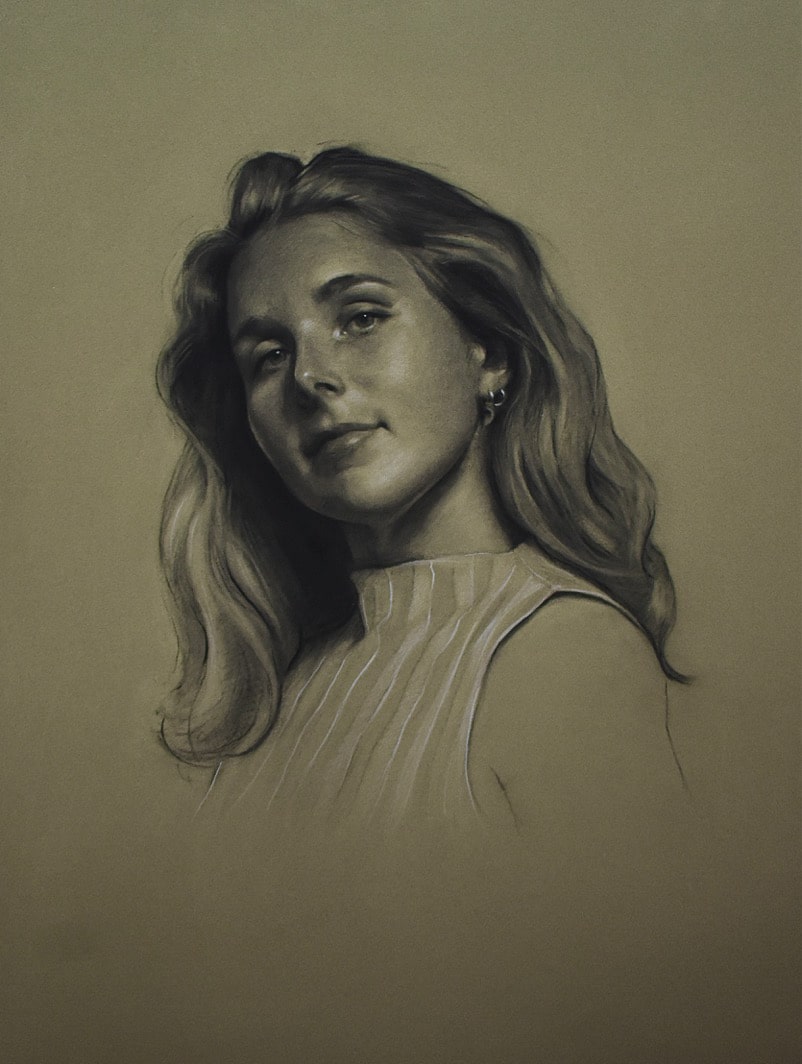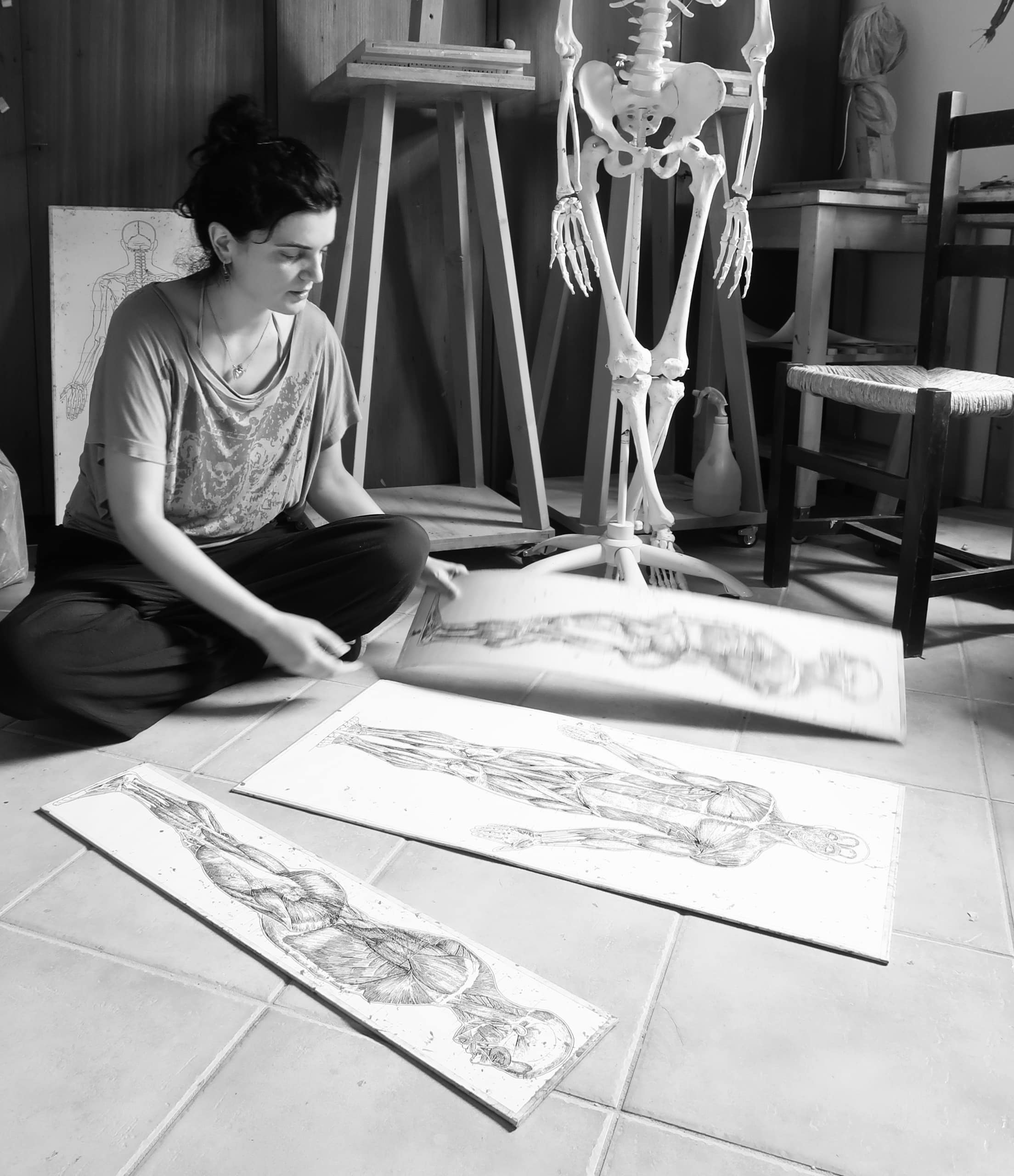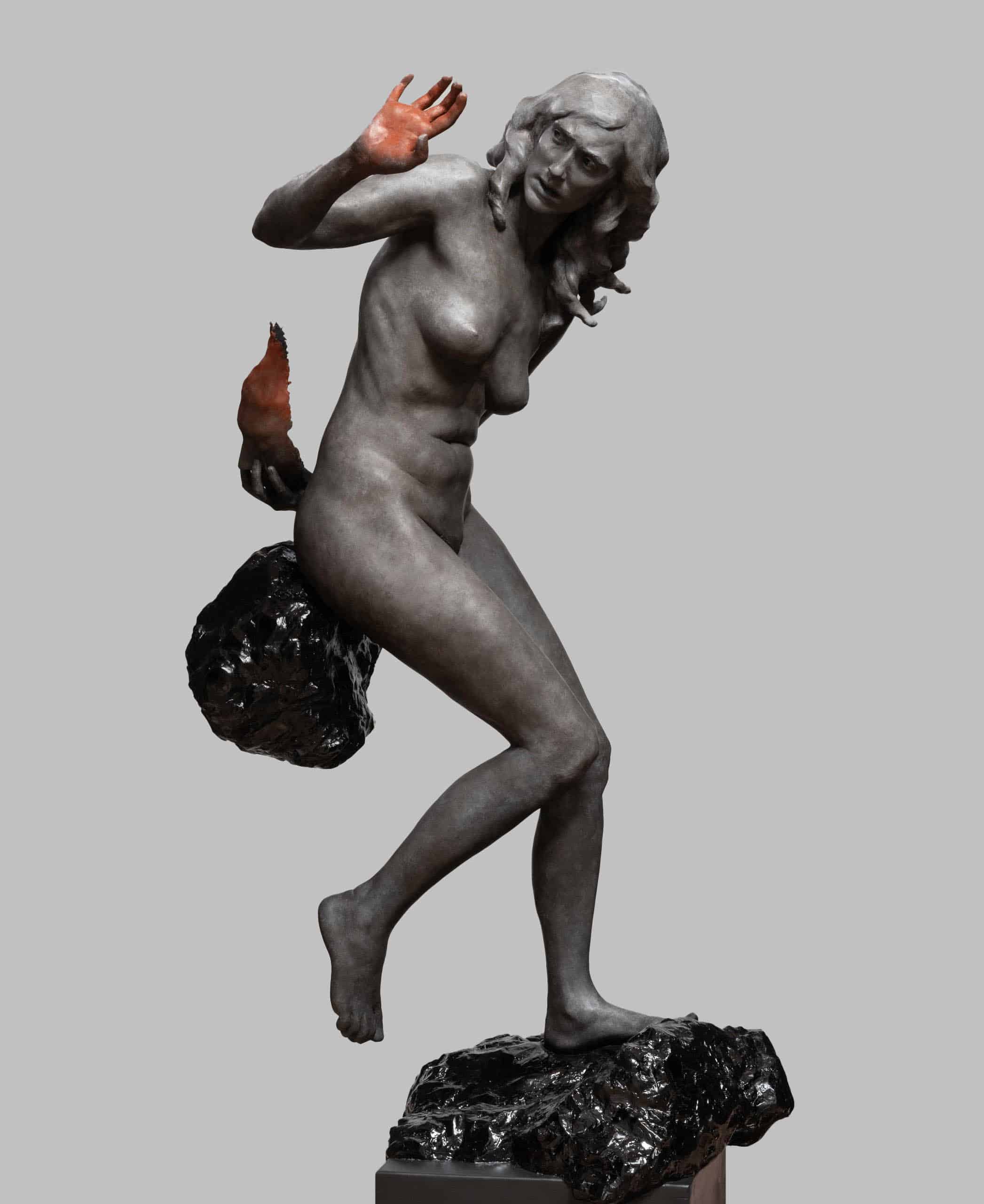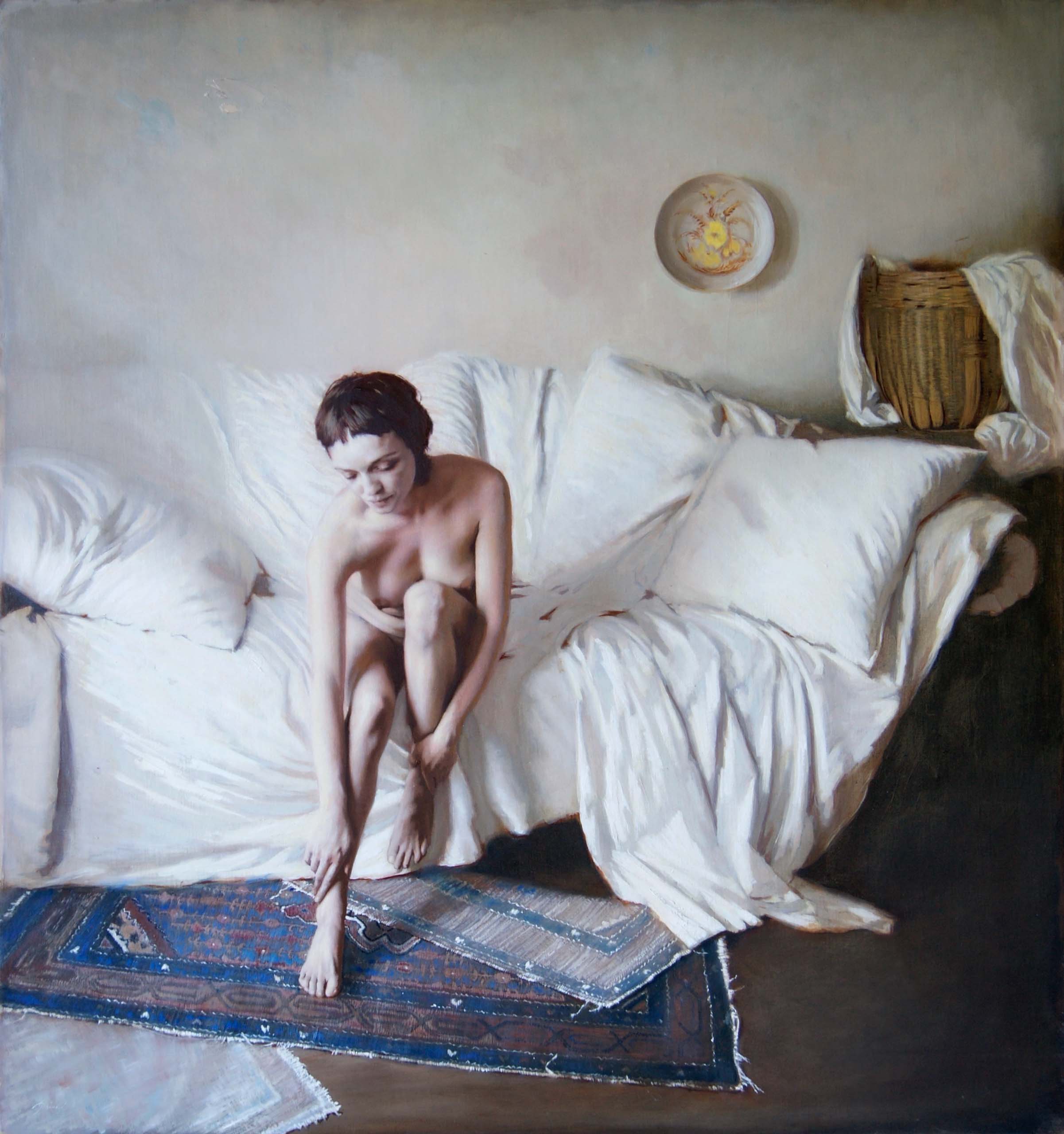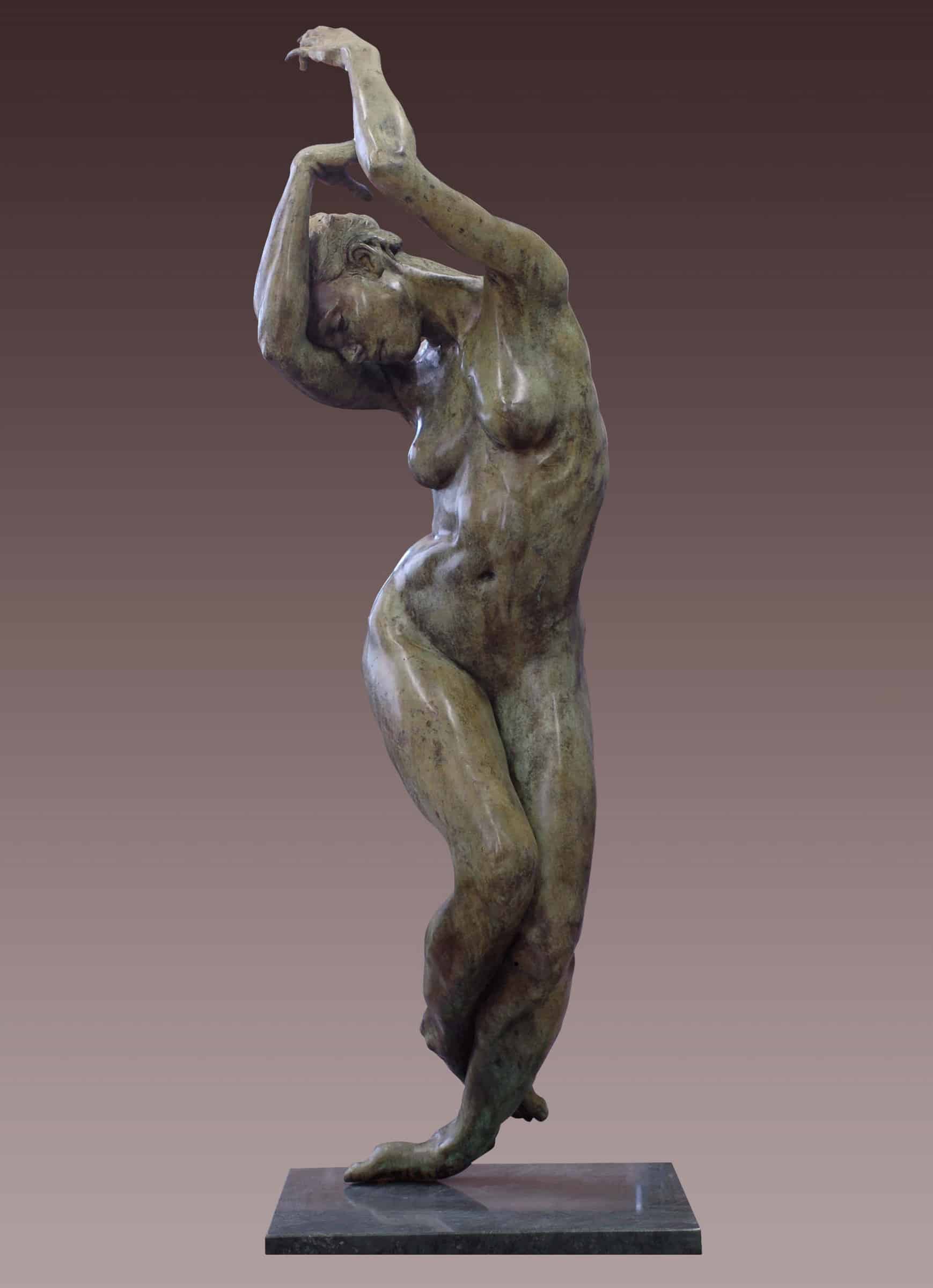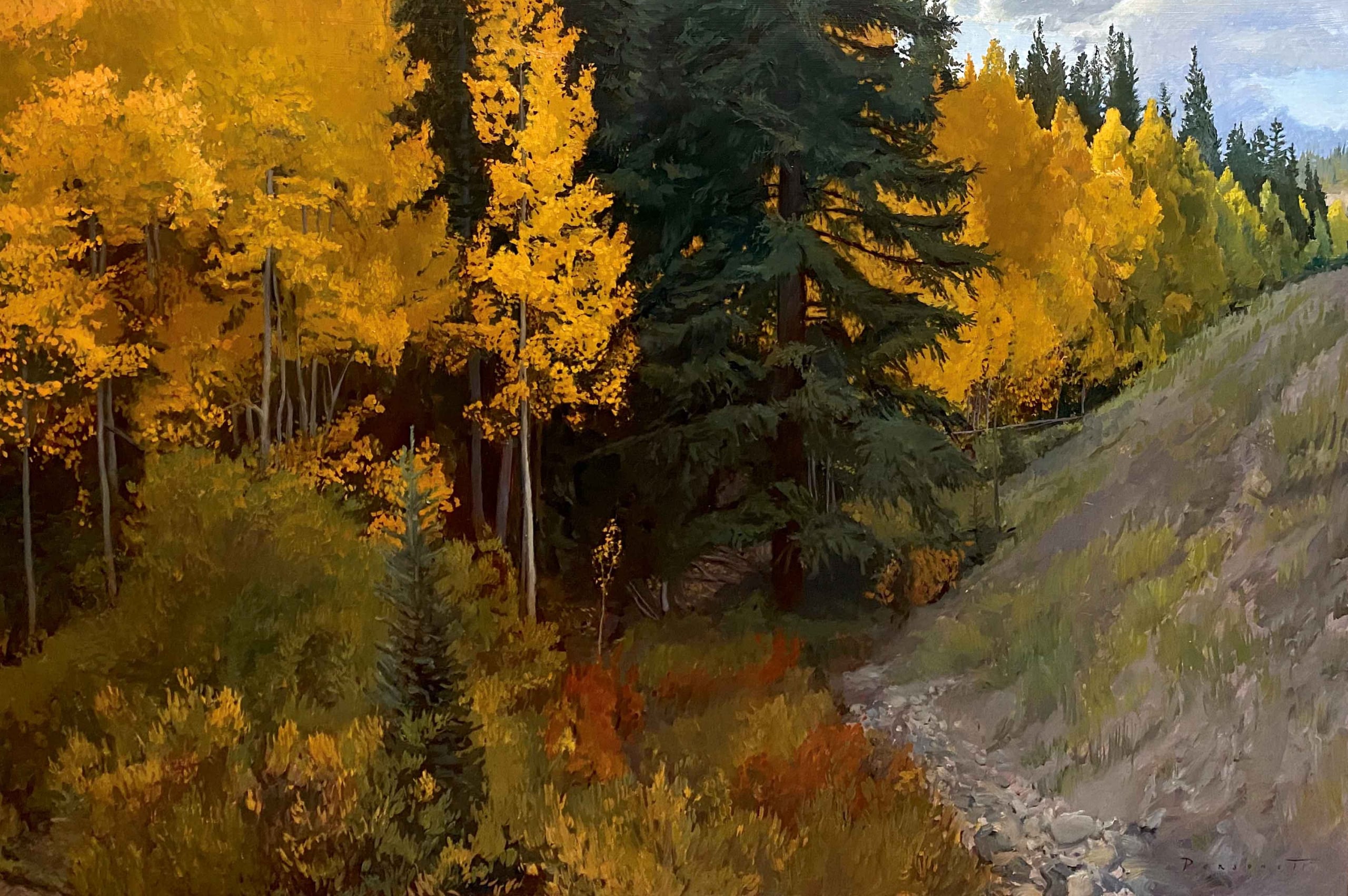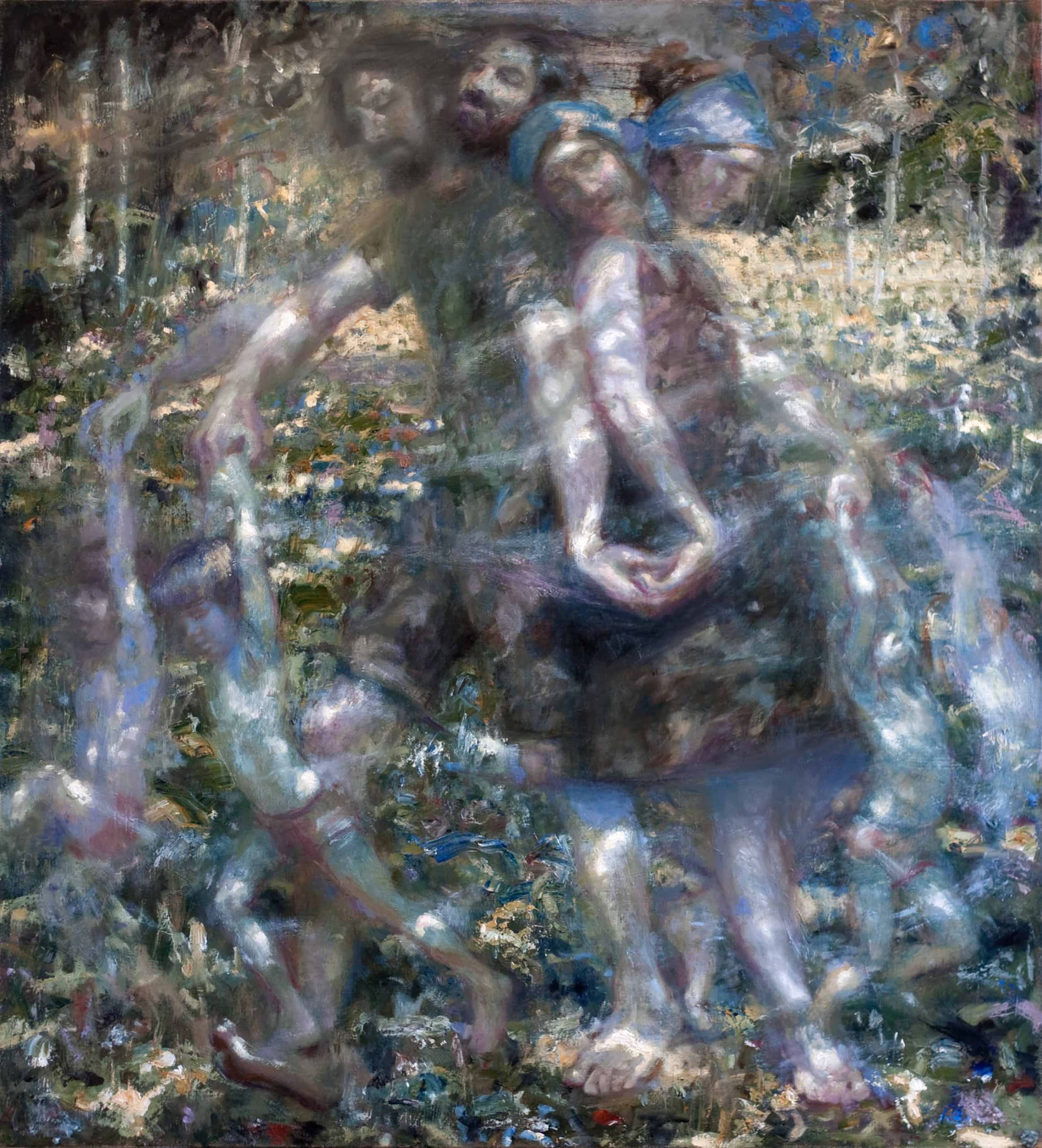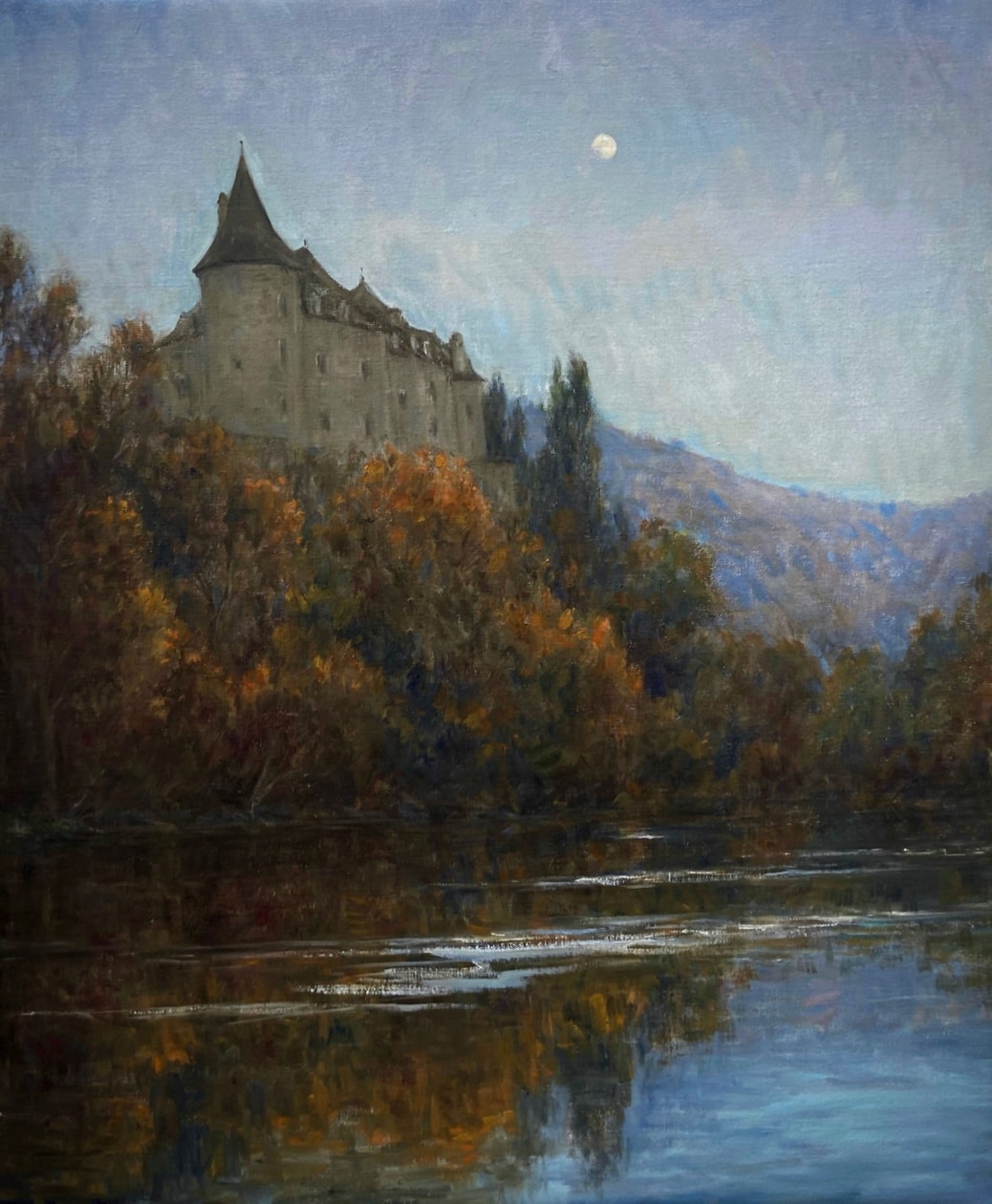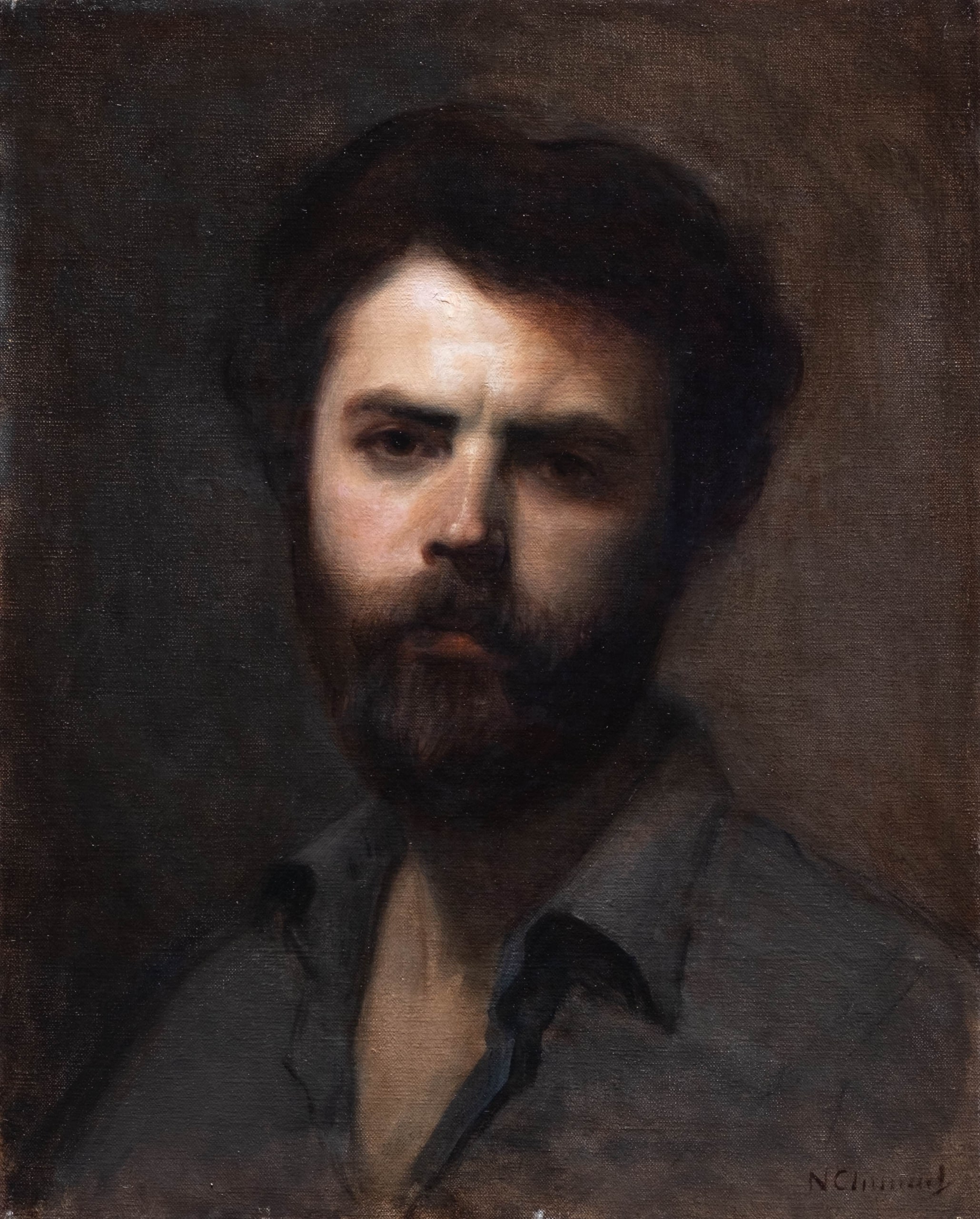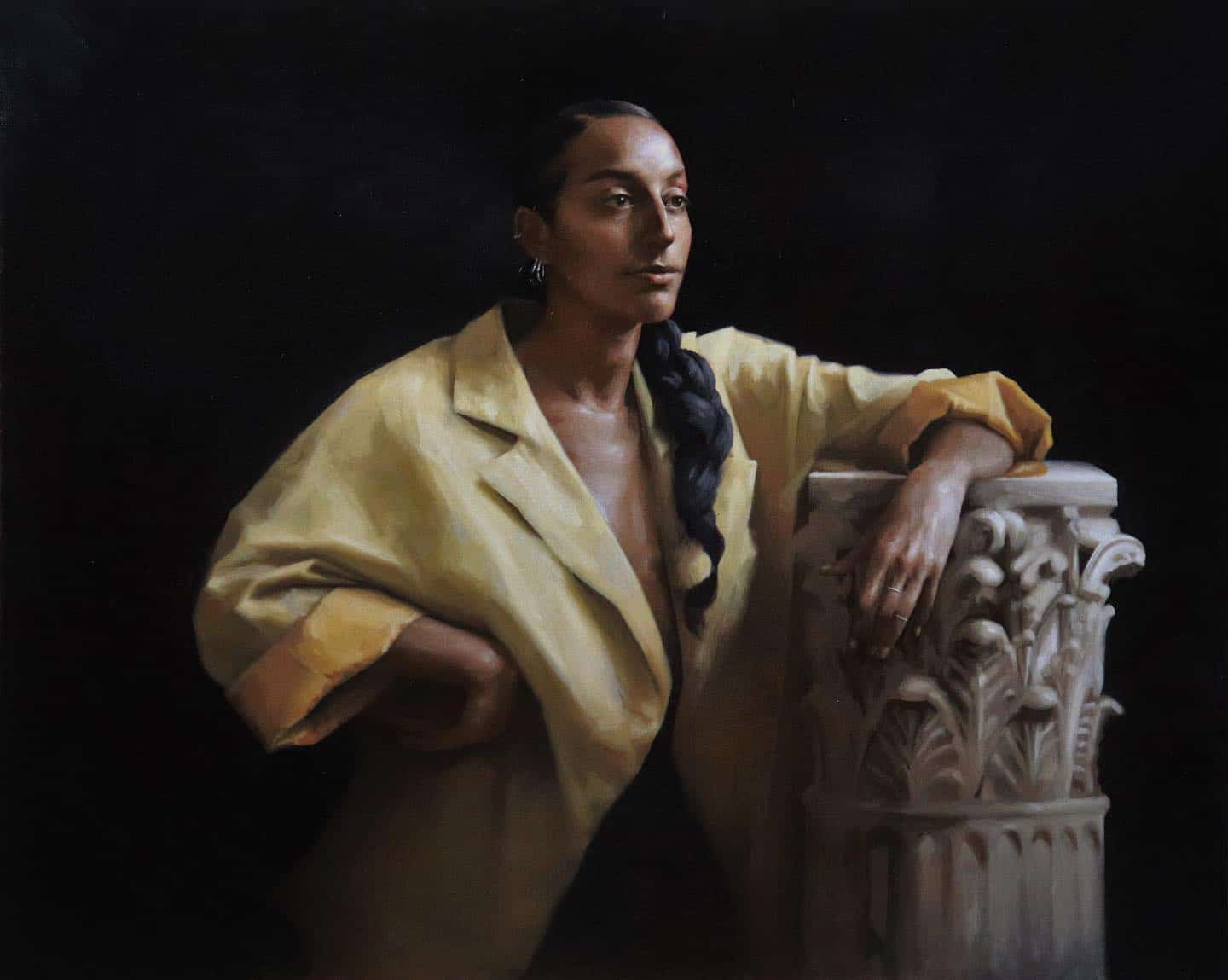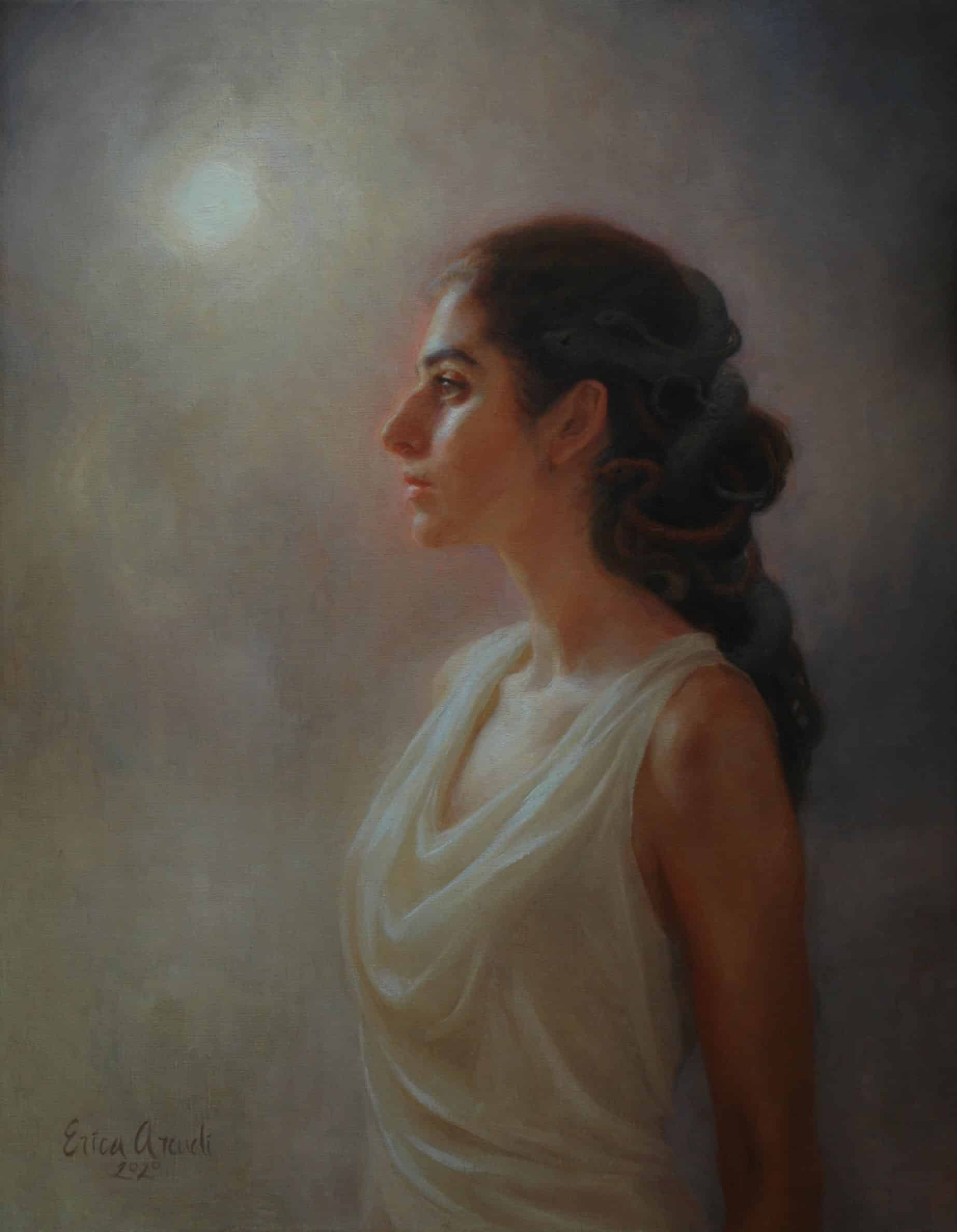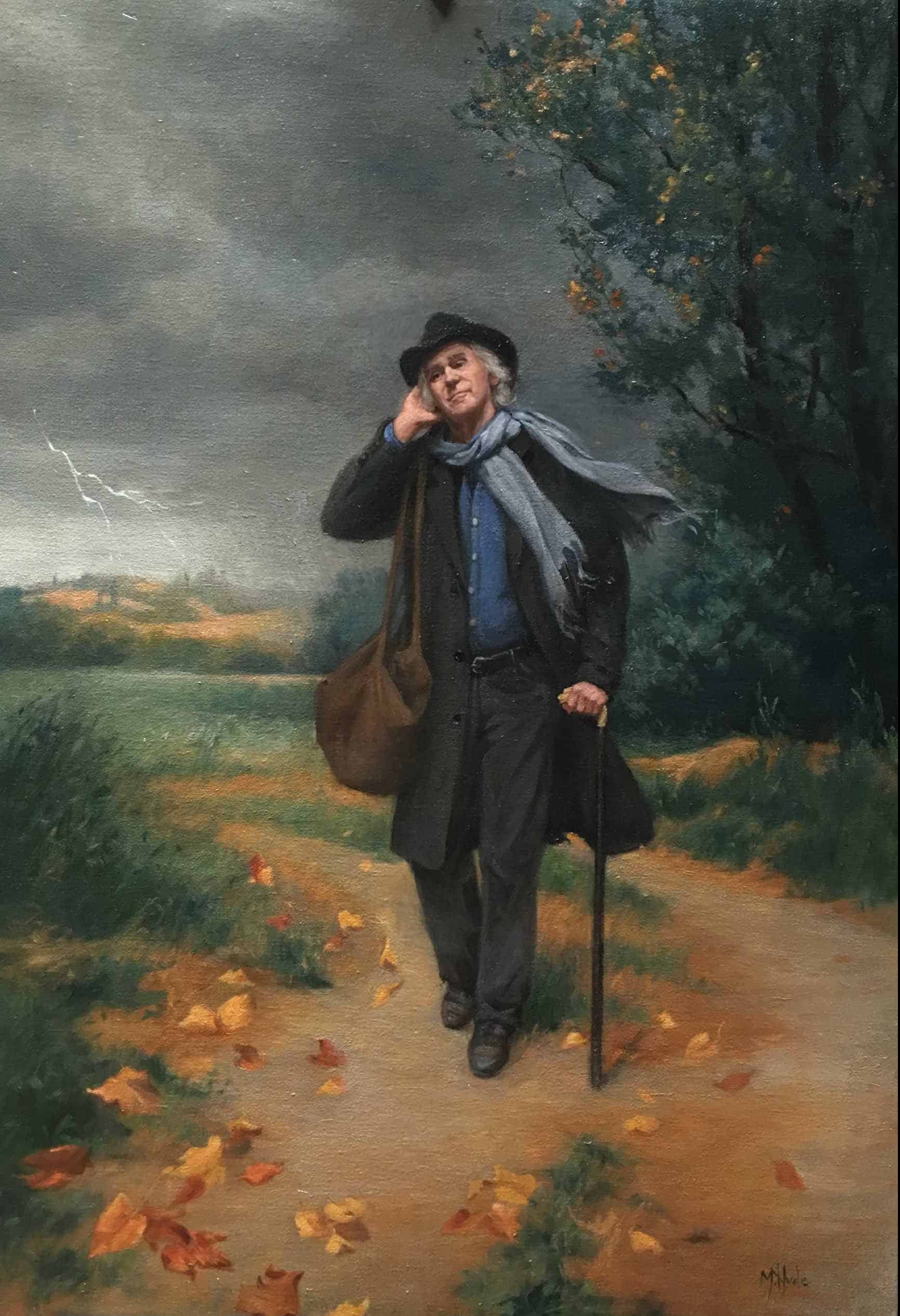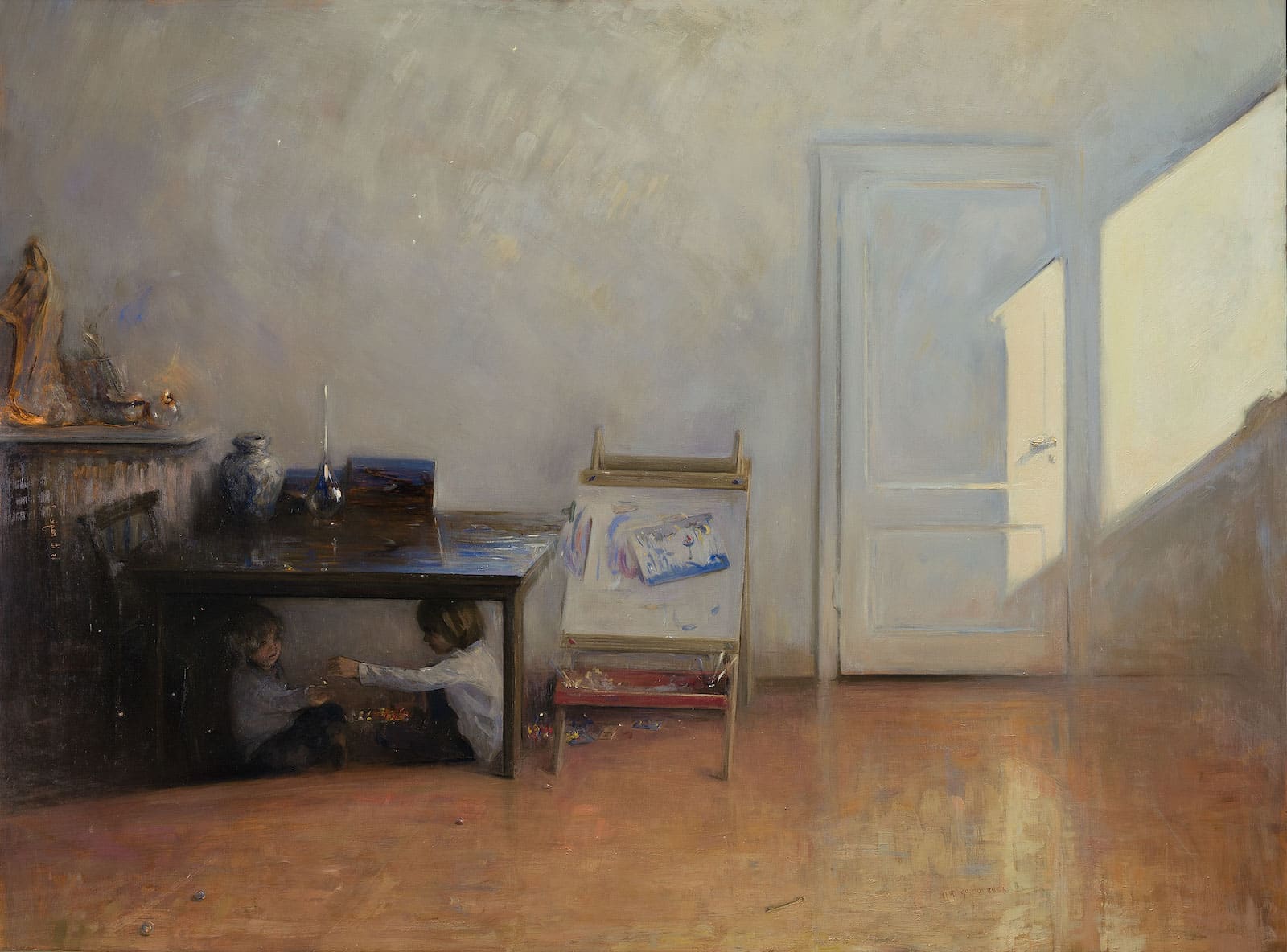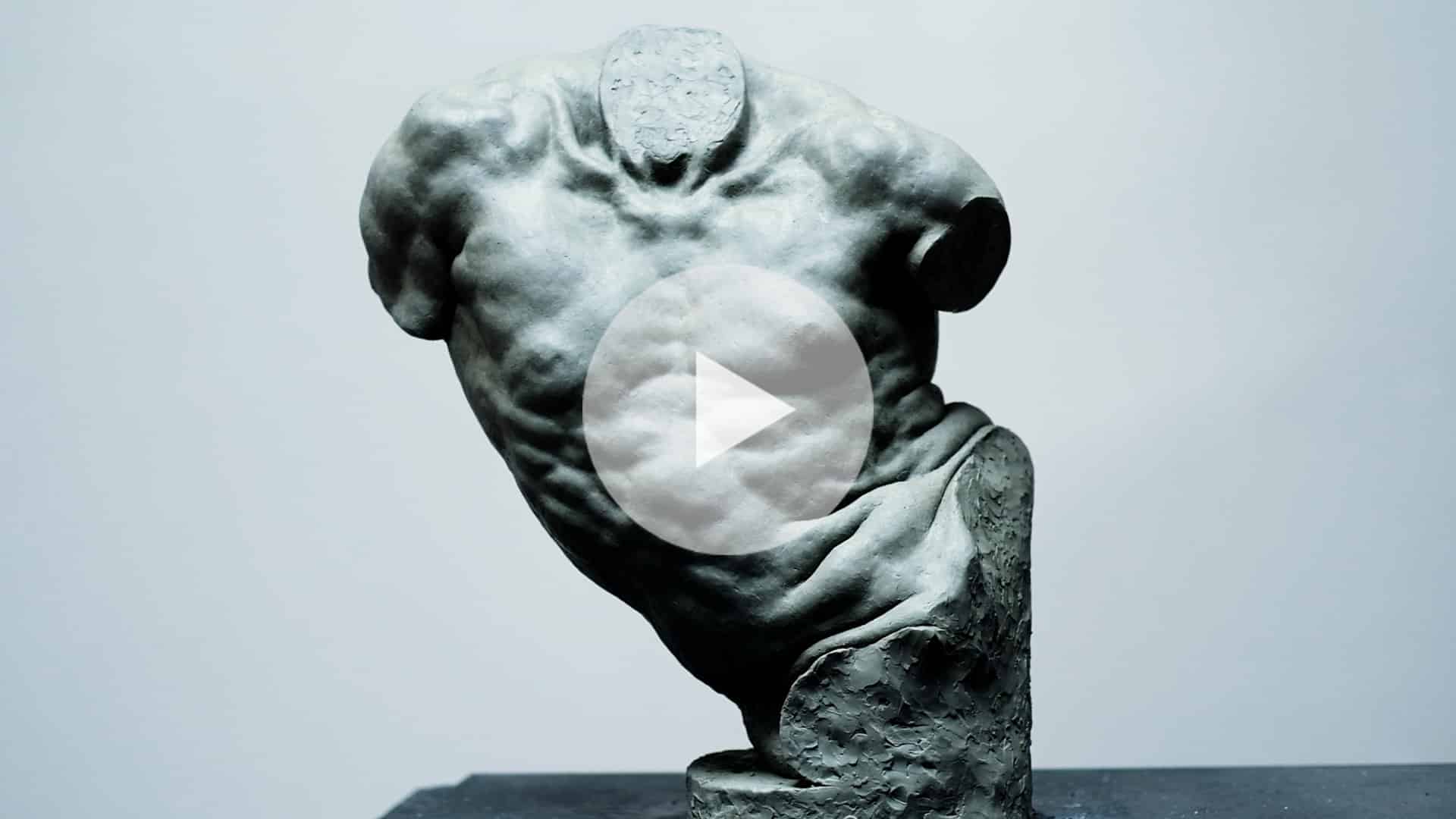May 15, 2022 / Spotlight on Art
Portrait of a Sleeping Robin by
Sarah Margaret Gibson
I owe a tremendous amount to my taxidermists, as they practice a very difficult and skillful art in their own right, and have been fantastic in working with me to create the poses I’m looking for. For the sleeping robin, I wanted a feeling of deep peace and stillness about the painting, which is reflected in the pose of the bird.
Sarah Margaret Gibson, "Portrait of a Sleeping Robin", Oil on linen panel, 13 x 18 cm, 2022

Somewhere in the space between a portrait and a still life, this Spotlight on Art goes in depth on the inspiration, material beginnings, and overall process behind the creation of Portrait of a Sleeping Robin, a painting by Sarah Margaret Gibson.
Gibson is a Scottish and American painter, co-founder and Academic Director of Glasgow Academy of Fine Art, and an alumna and former instructor of The Florence Academy of Art.
From the artist herself, we learn about how Michelangelo’s sculptures could inspire paintings of birds, exactly what and why certain materials are used for this painting, the thoughts and feelings Gibson intended to convey in the work, and so much more.
“I painted this portrait of a sleeping robin as a part of a new body of work I’m creating for my upcoming solo show at Arcadia Contemporary in New York. The show opens later this year, and is themed around my ‘Bird Portrait’ series—I call them ‘bird portraits’ as my focus is quite different to many other naturalist/animal paintings out there. In my bird portraits I seek to capture the individual bird I have as my subject: its particularities, its gesture, even its character and symbolic life-force. As my background is in portraiture, when I first took up the subject of birds back in 2019 it felt quite natural to apply the same set of priorities I would have for a portrait and even the same method; I paint the birds from life (never photos), I utilise a simple background in order to draw attention to the bird and give it a sense of gravitas, and I focus deeply on capturing the idiosyncrasies and particular characteristics of the bird in front of me, treating it with reverence and seeking to draw attention to its inner life.

Chaffinch at dusk,
Oil on linen panel,
13 x 18 cm,
2020
Goldfinches and cherry blossoms
Oil on linen panel,
30 x 40 cm,
2020
Goldfinches and cherry blossoms
Oil on linen panel,
30 x 40 cm,
2020
For this particular portrait of my sleeping robin, I used the same general process that I apply to all my birds, with a few minor tweaks to bring out the unique vision I had for this painting. I started by commissioning the bird from my taxidermist – whom I worked with closely to capture the pose, gesture and feeling I wanted for my subject. I owe a tremendous amount to my taxidermists, as they practice a very difficult and skillful art in their own right, and have been fantastic in working with me to create the poses I’m looking for. For the sleeping robin, I wanted a feeling of deep peace and stillness about the painting, which is reflected in the pose of the bird. The next step was to set the bird and my panel up in sight-size, and work with my shadow box and various fabrics to adjust the quality of light for the painting. I was working in a temporary studio when I painted this portrait, as my husband and I were in the process of building our proper North-light studio in our back garden at the time. The temporary studio had a very tall, west-facing window which I used as my light source. Luckily, Scotland has overcast light in winter about 90% of the time, so I was able to use the window as if it were North-facing very easily, while we awaited the completion of the proper studio.
My idea for this painting was to leave the background very much unfinished in order to juxtapose the tight rendering of the forms of the bird with the more abstract interest of the background. I’ve always been fascinated by Michelangelo’s so-called ’Slave sculptures’ at the Accademia Gallery in Florence, which I greatly enjoyed viewing while a student at FAA; I love the way the organic forms of the bodies emerge, suddenly from their raw, abstract blocks of marble, and then seem to sink back into them as if the marble represents the very ether or raw material from which the bodies were made. Though both the subject and the medium are completely different, I was inspired by this quality when conceiving the portrait of my robin.
To attempt something like this quality, I began by paying particular attention to my imprimatura. I tend to work on oil-primed, Belgian linen panels, which have a lovely surface texture to begin with. I then applied a thin layer of raw umber + ivory black (about half and half), mixed with turps and a touch of linseed oil to the panel, and played around using a rag and a stiff bristle brush to create an interesting base texture that would form the background. I wanted it to look organic, and yet also have strong vertical rhythms running through it to enhance the sense of tranquility in the painting.

The beginning stages of
Portrait of a Sleeping Robin
Once the panel was dry and ready to paint on, I began the portrait as I usually do, with a monochromatic underpainting in the ‘wash-drawing’ style; this essentially means that I attempt to establish the drawing of the subject—it’s proportions, outline, light and shadow pattern and even some halftones—in the simplest possible method. I used the same colour mixture as employed in the imprimatura (raw umber + ivory black), and achieved variation in value by the thickness/thinness with which that single mixture was applied, very much like an ink drawing. I then ‘heightened the drawing with white’ by using lead white in the same way as the raw umber mixture (i.e. varying the value through the thickness of application) for some selective highlights in the drawing. This is both a very efficient and simple way of establishing the drawing AND it’s an excellent first layer for the painting (being both very thin and flexible, and also very fast drying). I always attempt to take my underpainting as far as I can in terms of resolution; I essentially want the underpainting to give me an accurate map in monochrome of what the finished composition will look like.
After the underpainting is thoroughly dried (which only takes about 12 hours), I complete the colour block-in of the bird. For a single bird painting such as this one, I like to bring the painting to as much of a finish as possible in a single session—alla prima style. If I’m working on a larger, more complex painting I still use this approach for each individual element of the painting—attempting to bring it to a finish in a single session—and then tying the whole painting together through painting the background and making various adjustments in the final sessions. I feel confident in being able to work in this somewhat piece-meal way specifically because of the highly developed underpaintings I use, which map out the tonal structure and composition of the whole.
Portrait of a Sleeping Robin
in situ

Portrait of a Sleeping Robin
in situ
As I knew from the start that I was going to leave the imprimatura as the background for this piece, I had even more time and attention to pay to the robin itself. I began by triangulating my values – placing a paint notation for my lightest light, my darkest dark and then determining where between those two values the core shadow plane values lay. After triangulating these key values, I blocked in all of the colour-values of the bird, as thinly and simply as possible and working generally from dark to light. I used exclusively sable filberts for this stage of the process, as they give me just the right type of thin, yet opaque paint application with soft edges between value groups. Once all of the bird was blocked in, I took some time to readdress the drawing, which inevitably falls behind during the block-in stage. And then I began to build up the impastos (thick applications of paint) with stiff hog-bristle brushes. These impastos both expand the value range of the lights and describe the forms of the subject in a very sculptural way. Next I focused in on some selective details, concentrating very deeply on the forms of the face and the feet in particular. And lastly, after taking a break from the painting to refresh my eyes, I attempted to bring everything to a cohesive resolution; this is the crucial stage in which I try to view the painting as a whole again, softening and quieting down some areas whilst adding sharp or high-contrast accents in others in order to control the flow of the eye and the focus through the painting.
And this brings me to the end of my process. I hope that the portrait may have a similar effect on others as the process of painting it had on me, which is simply to give delight and perhaps a sense of reverence in contemplating the beauty of the robin, and also the abstract qualities of the oil paint that has created the illusion.” – Sarah Margaret Gibson
More about Sarah Margaret Gibson
Sarah Margaret Gibson (b. 1988) is from Cincinnati, OH.
Sarah Margaret is a contemporary realist artist, specialising in portraits of people and birds. Characterised by a rich tenebrism, Gibson’s work dramatically juxtaposes light against shadow. She believes that light, and all of its symbolic qualities, are most poetic when contrasted against dark. Building up her paintings from a series of fine layers—contrasting heavy impastos against thin, delicate passages—she seeks to give her works a palpable depth and complexity. She aims to capture the personality and life-force of her subjects. Opening up a dialogue with nature through her work, she responds to what she finds beautiful and endeavours to communicate this through the medium of oil paint.
Gibson received her formal training in drawing and painting in Florence, Italy. She studied at the Angel Academy of Art from 2008-2010, and then completed the full three-year program at The Florence Academy of Art, from which she graduated in 2013. She taught at the Florence Academy’s intermediate studio from 2012-2015. Over the course of her seven years in Florence, Gibson was profoundly influenced by the work and philosophy of the Old Masters and by the mentorship of great living artists such as Daniel Graves, founder of the Florence Academy.
Gibson currently lives on the West coast of Scotland with her husband and fellow Florence Academy alumnus, Lee Craigmile. In 2019 they co-founded the Glasgow Academy of Fine Art, where Gibson acts as Academic Director. She splits her time between teaching at the Academy, painting in her private studio and fulfilling her responsibilities as Ambassador for The Prince’s Foundation.
Gibson’s work is shown throughout the U.S. and Europe and can be found in both the New Britain Museum of American Art and in the New Salem Museum of Art, as well as in numerous private collections.



